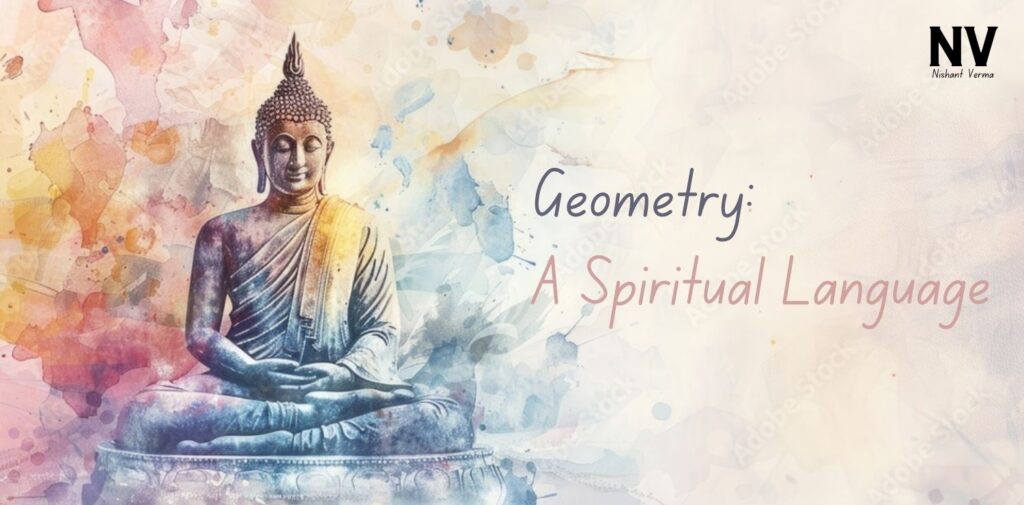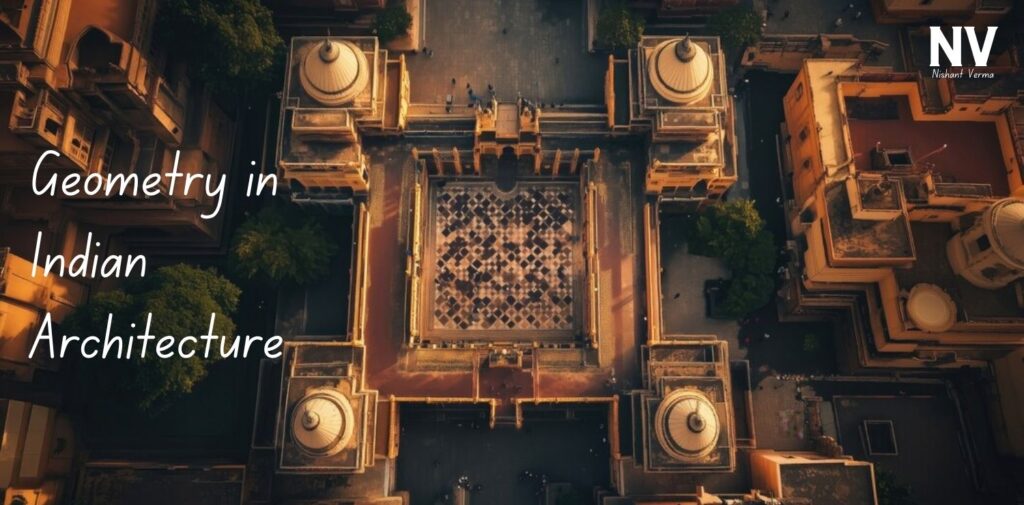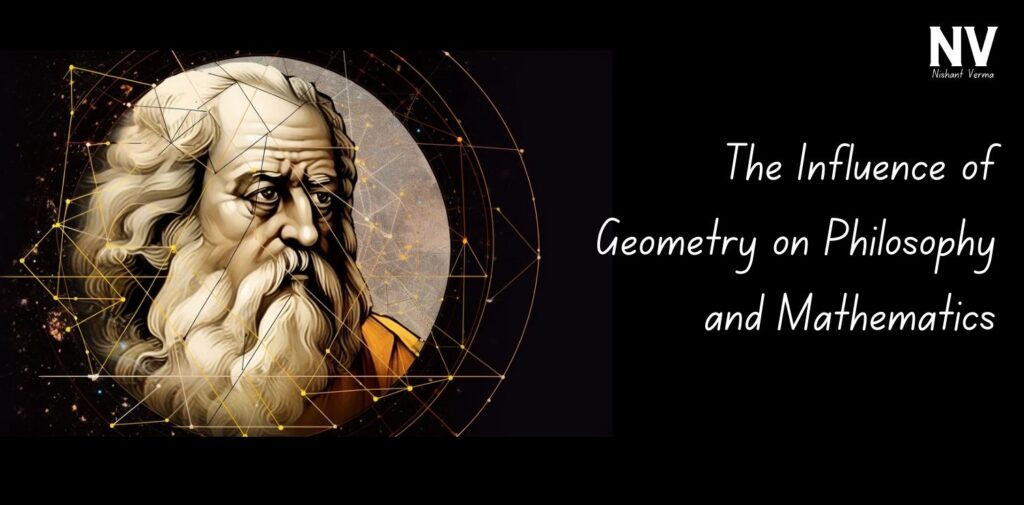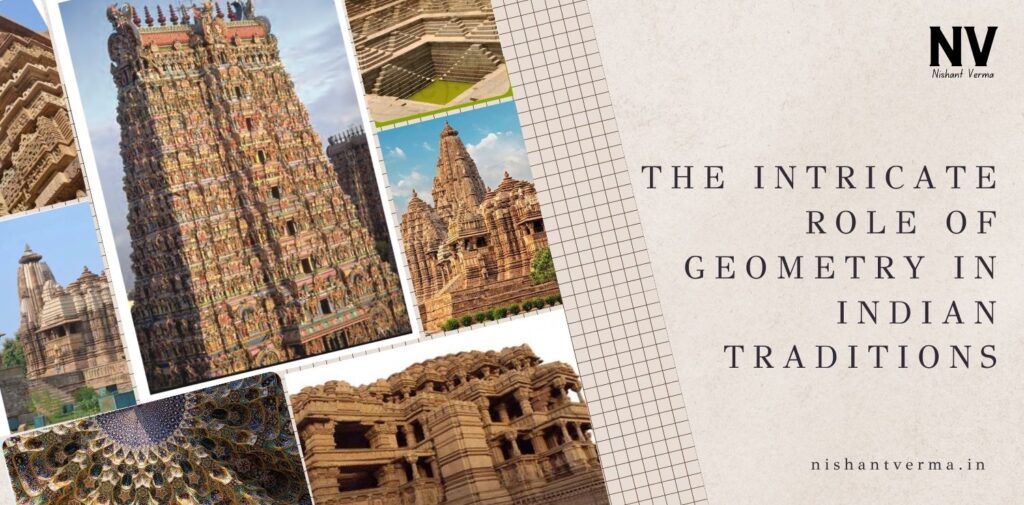Geometry, often perceived as a mathematical concept, holds a much deeper significance in Indian traditions, shaping art, architecture, spirituality, and culture. In India, geometry transcends mere shapes and patterns; it becomes a language through which the cosmos is expressed, revealing a connection between the material and spiritual worlds. This article explores the profound role geometry plays in Indian traditions, drawing insights from various sources and showcasing its multifaceted influence.
Geometry: A Spiritual Language
In Indian culture, geometry is not just a mathematical tool but a spiritual language. Ancient texts like the Vedas and Shastras emphasize the importance of geometric shapes in rituals and worship. The concept of sacred geometry emerges here, where specific shapes and patterns are believed to possess spiritual significance. For instance, the mandala, a geometric figure representing the universe, serves as a spiritual guide during meditation and rituals.

Mandala designs often incorporate circles, squares, and triangles, symbolizing the interconnectedness of life and the cosmos. When drawn or constructed, these patterns create a sacred space, helping practitioners align themselves with divine energies. The geometric precision in mandalas reflects the order and harmony present in the universe, illustrating how geometry becomes a bridge between the material and spiritual realms.
Geometry in Indian Architecture
One of the most striking examples of geometry in Indian traditions is found in architecture. The ancient Indian architects and craftsmen employed geometric principles to create stunning structures, many of which still stand today. Temples, forts, and palaces showcase intricate designs that often embody cosmic and philosophical concepts.
For instance, the Shikhara (spire) of a temple often features geometric motifs that symbolize the ascent of the soul toward the divine. The famous Brihadeeswarar Temple in Thanjavur is a prime example, where the temple’s layout and elevation demonstrate an intricate understanding of geometry. Each element serves a purpose, from the overall structure to the decorative patterns, embodying the spiritual significance attributed to geometry.
Moreover, the use of geometric patterns is prevalent in Indo-Islamic architecture. The Taj Mahal, with its symmetrical design and intricate marble inlays, reflects the influence of geometric principles in creating beauty and harmony. The interplay of shapes and patterns not only enhances the aesthetic appeal but also conveys philosophical meanings, emphasizing the connection between the earthly and the divine.

Geometry in Art and Craft
Beyond architecture, geometry is deeply ingrained in various forms of Indian art and craft. From traditional paintings to textiles and pottery, geometric patterns play a vital role in expressing cultural identity and heritage. For example, Madhubani paintings from Bihar often feature intricate geometric designs that depict nature, mythology, and folklore. These patterns are not just decorative; they hold cultural stories and beliefs, showcasing the artist’s connection to their environment and community.
In textiles, geometric motifs are used to symbolize various themes, such as fertility, prosperity, and protection. The vibrant patterns in sarees and block prints often reflect the region’s cultural richness and artistic heritage. Geometric designs become a means of storytelling, preserving traditions while adapting to contemporary influences.
The Influence of Geometry on Philosophy and Mathematics
Indian philosophy also incorporates geometric principles, highlighting their significance beyond the physical realm. Concepts like Brahman (the ultimate reality) and Maya (illusion) can be understood through geometric representations. The cyclical nature of existence, represented by circular shapes, reflects the idea of life, death, and rebirth. Geometry thus serves as a philosophical tool to comprehend the complexities of existence.
Mathematics, particularly geometry, flourished in ancient India, contributing to global knowledge. The ancient Indian mathematician Brahmagupta and his works on geometry laid the groundwork for future developments in the field. The Pythagorean theorem, often attributed to Greek mathematicians, has roots in Indian geometry, showcasing the cross-cultural exchange of knowledge.

Geometry in Rituals and Festivals
Geometry also finds its place in rituals and festivals, where specific patterns are created as offerings to deities. Rangoli, colorful patterns made on the ground during festivals, often incorporate geometric designs that symbolize prosperity and welcome. These designs are temporary yet hold deep significance, reflecting the belief in the cyclical nature of life.
During festivals like Diwali, the use of geometric patterns in decorations emphasizes the idea of bringing light into darkness, aligning with the spiritual themes celebrated during these occasions. The intricate designs created during rituals embody the essence of geometry as a means of connecting with the divine and expressing devotion.
Conclusion: Role of Geometry as a Cultural Thread
In conclusion, geometry serves as a profound thread woven into the fabric of Indian traditions. From spirituality and architecture to art and philosophy, its influence permeates every aspect of life. The intricate patterns and shapes are not mere decorations; they carry cultural stories, spiritual meanings, and philosophical insights.
As we explore the role of geometry in Indian traditions, it becomes evident that this ancient discipline transcends mathematical boundaries, becoming a vital part of the cultural identity and spiritual heritage of India. Through geometry, we can appreciate the beauty and complexity of the world around us, reflecting the interconnectedness of life and the universe.
In an era where technology often overshadows tradition, recognizing the significance of geometry in Indian culture allows us to celebrate and preserve the rich legacy of our ancestors, ensuring that these timeless values continue to resonate in contemporary society.




